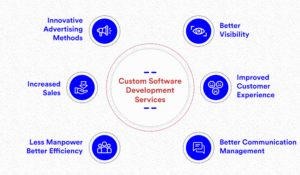Software repair assistants are like your tech support magic wand. When your computer starts acting funny or your apps go haywire, these tools step in to smooth things out. They’re designed to fix glitches and optimize performance, making sure everything runs like a well-oiled machine.

Whether you’re a tech newbie or a seasoned pro, having a software repair assistant in your toolkit is a game-changer. These tools are vital because they help diagnose issues fast, so you’re not left scratching your head. They can save you time and a lot of frustration by getting to the root of the problem quickly.
Loads of software repair assistants are out there, each with its own bells and whistles. You’ve probably heard of some big-name tools and maybe even used a few without realizing it. Understanding what each offers can help you decide which one to rely on when trouble arises.
Let’s look at how these tools have made a difference in real life. For instance, businesses often rely on software repair assistants to maintain smooth operations, preventing what could be costly downtimes. Even on a smaller scale, home users have seen their PCs recover from glitchy behavior simply by running a repair assistant, which can feel downright miraculous at times.
Key Features of Effective Software Repair Assistants
When you’re picking a software repair assistant, knowing the key features makes all the difference. These tools aren’t just about quick fixes; they should be equipped to tackle a range of issues. A good one scans for problems efficiently, identifies them accurately, and provides reliable solutions. Look for tools that can handle unexpected glitches and optimize performance regularly.
There’s always a bit of a dance between simplicity and complexity. An effective software repair assistant should strike the right balance—easy enough for anyone to use but packed with advanced options for those who need them. Beginners might just want to click a button, while more tech-savvy folks could desire in-depth functionalities to tweak and tune.
Compatibility with different software environments is another big deal. You want a tool that plays nice with your existing software and hardware, so you’re not creating more issues while trying to fix one. A seamless integration means your repair assistant fits right into your setup without a hitch.
Ongoing updates and user feedback are signals of a reliable tool. Technology evolves fast, and a good software repair assistant stays up to speed with regular updates. Developers who listen to user feedback can enhance functionalities and fix bugs quicker. This adaptability ensures you’re getting a tool that’s not only effective now but will continue to serve you well into the future.
Choosing the Right Software Repair Assistant for Your Needs
When selecting a software repair assistant, understanding what you truly need is essential. Start by assessing your specific requirements. Are you looking for something to handle minor irritations, or do you need a powerhouse that can tackle more significant issues? Knowing the scope of your needs will guide your choice.

You’ll find a mix of free and premium software repair assistants out there. Free tools are great for basic needs and are often surprisingly effective. However, premium versions usually offer more comprehensive solutions and additional features. Weigh your options considering what you’re willing to invest both in terms of money and trust.
Reading success stories and expert reviews can shed light on what software repair assistants deliver the best results. Reputation matters, and positive feedback from industry experts or satisfied users can point you toward reliable options. Look for tools that have proven track records in resolving problems similar to yours.
Finally, it’s worth keeping an eye on future trends. The role of AI and machine learning in software repair assistants is growing rapidly. These technologies can offer smarter solutions and greater efficiency. While these cutting-edge features might not be necessary for everyone right now, they signal where the industry is heading, potentially offering even more robust tools to help manage software issues.

